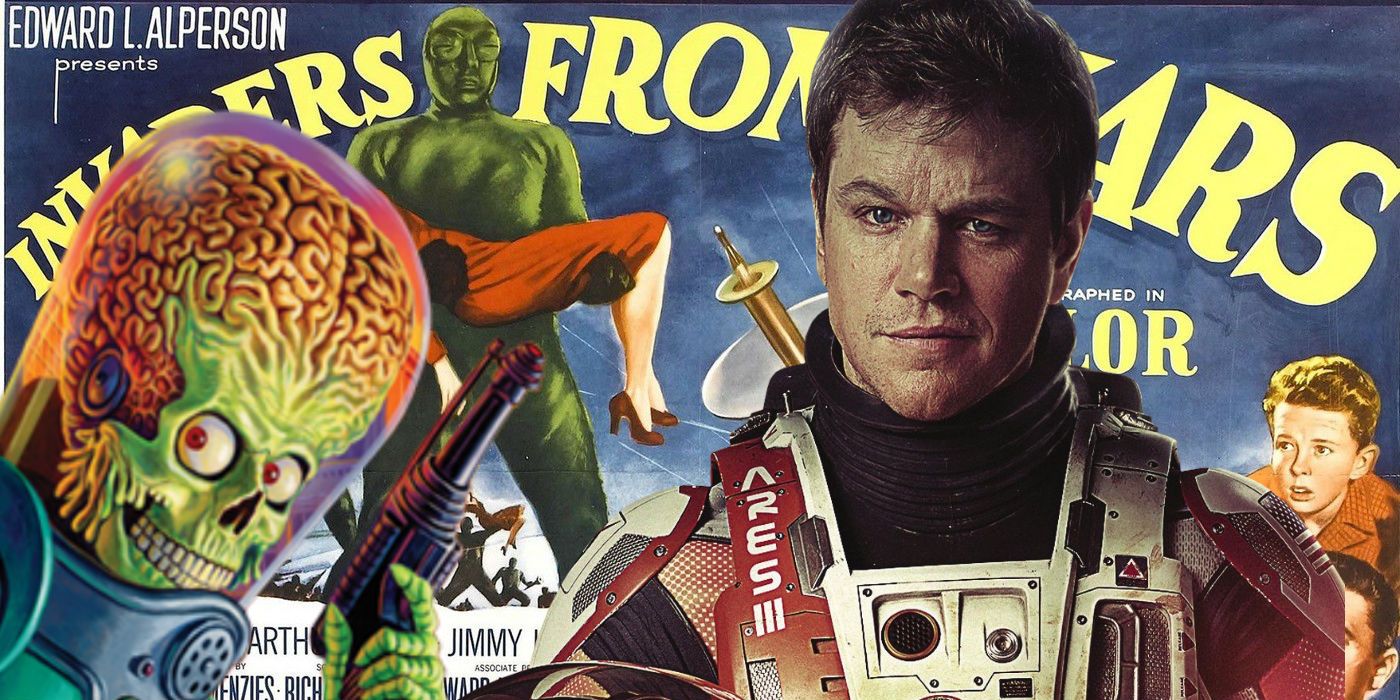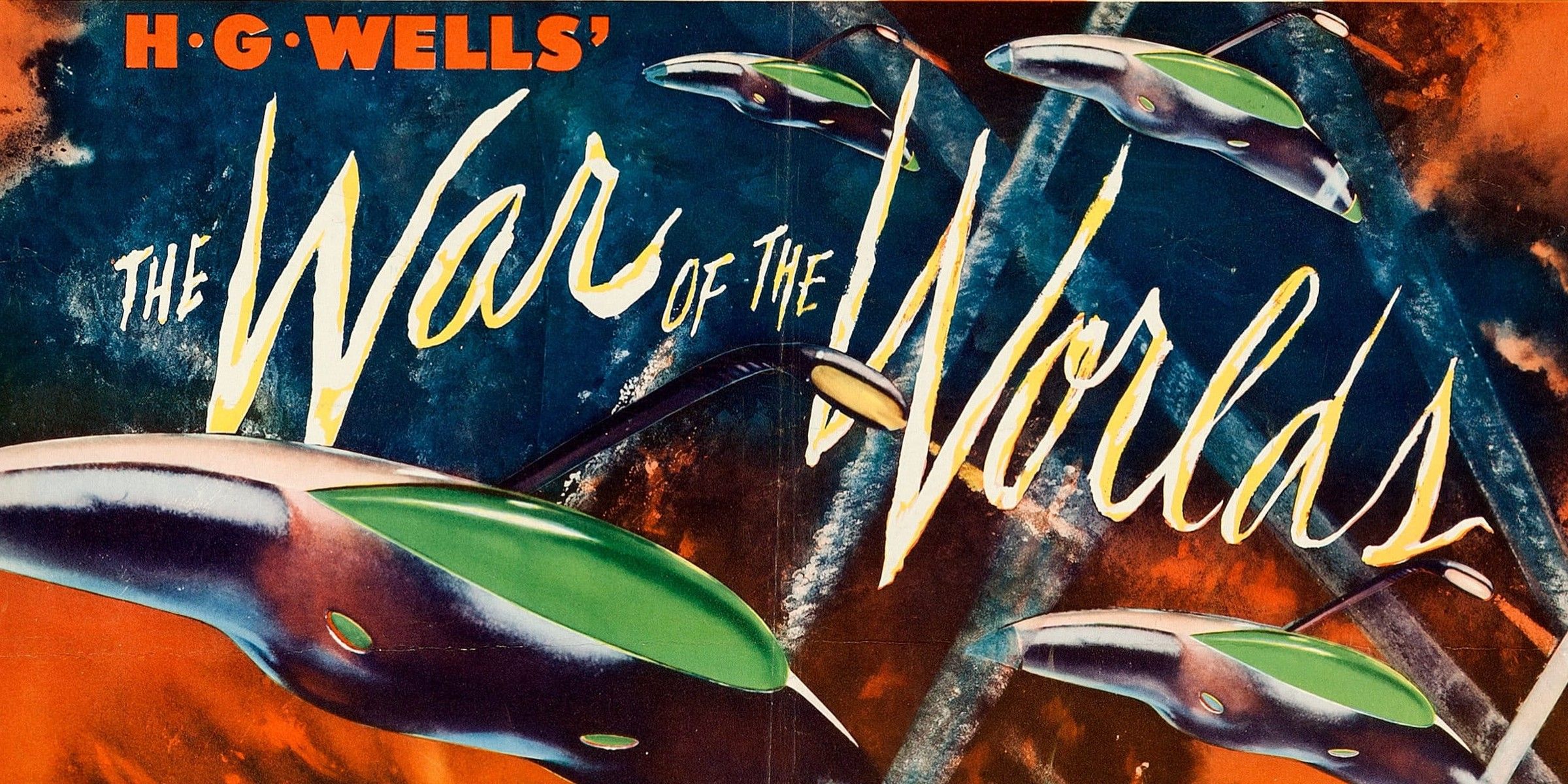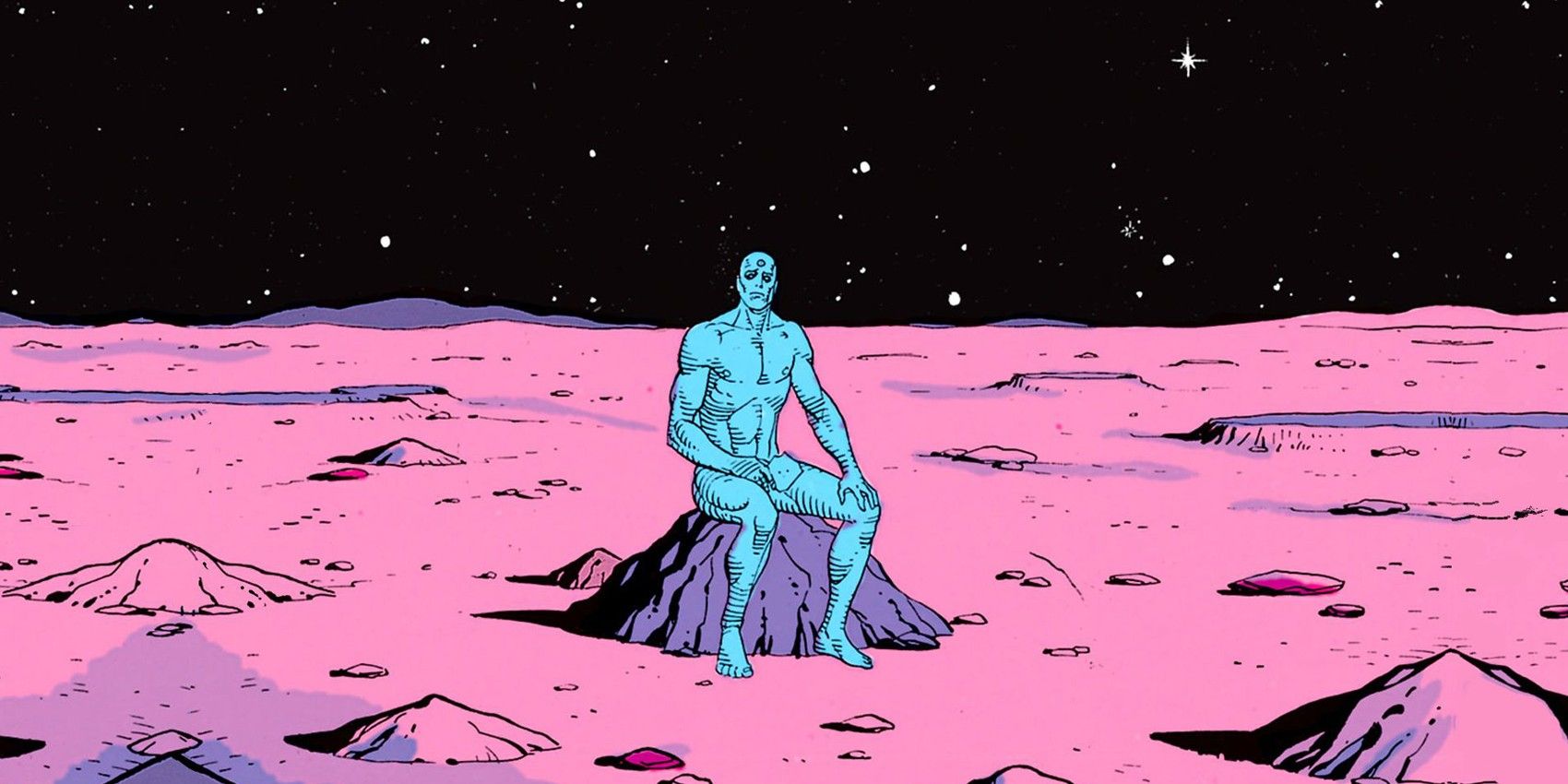
In a bygone era, Hollywood was in love with Mars as a science fiction setting but, as far as movie studios are concerned, the Red Planet is now the dead planet - here's why. The nature of human curiosity and our species' unerring desire to strike out into the unknown forms the backbone of the sci-fi genre. Whether set in outer space, the far future or merely an alternate version of Earth's present, a common thread throughout the history of science fiction is the intention to examine any unknown possibilities the universe has to offer; stories that might, one day in the barely-visible distance, make the leap from imagination to reality.
Outer space obviously plays a huge role in this and it's not without good reason that Star Trek refers to the vast blackness as "the final frontier." By the 19th century, man had more or less covered the surface of the Earth, barring a few remote corners and the bottom of the ocean, but a hunger to discover new territory remained, and thoughts soon began to turn from land to sky, with the universe beyond our own humble planet still presenting mystery in abundance. Scientists had been studying the stars for centuries prior, but by the end of the 1800s, space was starting to go mainstream.
At the forefront of this sense of unlimited wonder was Mars. With its proximity to Earth and an ominous red glow, Mars caught the attention of imaginative types with a romantic disposition and was cemented as a major future stop on humanity's grand tour of the galaxy. This real-life hope is reflected in the fiction of that era and became even more prominent with the evolution of film, but the Mars bubble has now very much burst...or has it just become something else entirely?

The science fiction obsession with Mars began with the work of Giovanni Schiaparelli, an Italian astronomer who, intentionally or otherwise, popularized the notion that the surface of Mars was covered in channels that could've been made by intelligent life-forms. Still in its infancy, the sci-fi genre latched on to the rapidly growing belief that alien life might be closer than expected and Mars offered a realistic blank canvas for authors to paint their wildest creations onto. The Red Planet was close enough to Earth to plausibly allow for invasions and visitors from another world, but far enough away to offer a sense of intrigue that, with all due respect to the moon, closer celestial bodies failed to inspire.
The aura of Mars quickly enraptured the literary world, with landmark novels such as Percy Greg's Across The Zodiac (1880), H.G. Wells' The War of the Worlds (1898) and the John Carter stories all exploring what life on the Red Planet could look like, and why it might want to come down to Earth and kill everyone. The popularity of such tales was quick to permeate the earliest years of the film industry, with A Trip To Mars (1918) depicting a utopian, futuristic society on the titular planet and Aelita (1924) introducing the oft-revisited Martian love story trope.
Cinema's love affair with Earth's neighbor only gathered momentum from there and, for many, the notion of Mars in sci-fi conjures images of the B-movie era of the mid-20th century. Shlocky, low-budget productions such as Mars Needs Women (1967) and Devil Girl From Mars (1955), as well as contemporary and influential classics like Invaders From Mars (1953) took the concept of life on the Red Planet to fantastical extremes and defined the sci-fi genre of that era, perhaps also inadvertently birthing the "little green men" stereotype.
Of course, the real attraction of Mars wasn't just the endless possibilities of an unknown land, but its malleability as an allegory for conflict on Earth. It's no coincidence that Martian movies often involved invasion or infiltration - these stories were reflecting the fears of the day, whether that be World War, the Nazis or the Cold War. The parallels between enemies from Mars in the movies and the United States' tense relations with Russia in real life is particularly apparent through the 1960s, with invaders from the Red Planet becoming a perfect metaphor for the red threat of the Soviets.

There came a distinct turning point for Mars in the movies when the veil of unknown around the planet began to lift. The 1965 Mariner 4 probe provided the most accurate information about Mars to date and not only managed to debunk the canal theory inspired by Schiaparelli, but also confirmed the chance of life existing on the planet was remote. Subsequent missions on the surface of Mars, primarily the Viking program, would go on to suggest any life form that was present on the surface would be in the form of a germ or a similarly microscopic organism, rather than a bipedal rubbery villain with a ray gun and a thirst for human women.
When the wonders of real-life science burst the Mars bubble, Hollywood began to lose interest. Although few ever seriously expected there to be a fully-functioning civilization sitting on Earth's neighboring planet, the emergence of absolute proof forced science fiction to think twice about Mars as an effective setting. Part of the genre's appeal came from taking vaguely plausible ideas and pushing them into imaginative new realms, but the evidence of Mars as a lifeless world shattered that illusion.
Mars in fiction was rapidly reevaluated. The Martian threat to mankind's existence that dominated science fiction in the early 20th century was gradually replaced by stories of colonization and exploration in the 1970s and 1980s. Invaders were no longer coming from Mars, humans were heading towards it, bolstered by a successful real-life moon landing that promised a new dawn for space exploration. 1978's Capricorn One, for example, centered around a hoax Mars landing, shifting the focus away from what might already be on Mars, and toward what humans might do about getting there.
While the notion of Martian UFOs descending upon the Earth was rapidly consigned to cinematic history, science fiction's love of aliens and intergalactic peril hadn't waned, and the genre began to look for alternatives further afield. In reality, the Mars mission was replaced by new targets, such as the Saturn moon of Titan. Deemed a potential hotbed of natural energy and a possible location for human colonization, many scientists began turning their telescopes from Mars to Titan as a more interesting long-term space project. In science fiction, Mars became similarly old news. Now-iconic 1960s franchises such as Star Trek and Doctor Who looked elsewhere for their alien threats (Ice Warriors aside), reflecting humanity's broadening scope. Alien threats in sci-fi were no longer coming from the Red Planet, but from deep space and distant galaxies that were many, many years away from being explored.

Despite its recent cinematic relegation, Mars has maintained a presence on the big screen, but has enjoyed markedly less success now that the planet's mysteries are actually being unraveled. Disney's pricey 2012 John Carter movie removed any mention of Mars from its title and still became one of history's biggest movie flops. The CG-animation Mars Needs Moms (2011) also posted a massive loss, despite trying to circumvent science by claiming that the aliens are living under the Red Planet. Even Mars Attacks! (1996), which was merely intended as a parody of B-movie Mars mania, proved to be a box office disappointment, while the horror-styled The Last Days on Mars (2013) tried to assert that there still could be life on its eponymous planet, and was rewarded with paltry box office takings and scathing reviews for its troubles.
The message from movie-goers is clear - Mars no longer works in the context of science fiction. The allure, the mystery and the romance of the planet as a fantastical setting has long since evaporated and audiences are no longer buying the notion that an alien threat exists there. However, Mars' role in cinema is far from over. While the fantasy elements of Mars may no longer be viable, there does appear to be value in exploring the Red Planet with a more realistic approach, and the idea of Mars being a final frontier of human exploration remains active as long as mankind doesn't set foot there.
Matt Damon's The Martian is a prime example of this - a critically acclaimed and profitable venture that depicted Mars more akin to a perilous mountain range or an isolated Arctic outpost. This realistic Mars evidently resonated with modern viewers far stronger than any recent fictionalized portrayal of the planet, confirming that Mars was no longer an "alien" location in science fiction, but essentially an extension of the charted world on Earth. Given the limited progress made in terms of space exploration since the moon landing, sci-fi is probably safe from any more drops in popularity that come about as a result of genuine scientific discovery. But it's an unquestionable truth that the genre will always need to stay one step ahead of reality if it means to keep creating a sense of awe and wonder.
from ScreenRant - Feed https://ift.tt/2usqeEs

0 comments:
Post a Comment